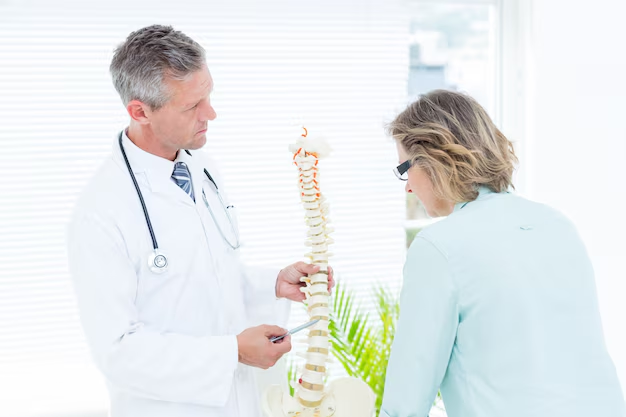Managing Osteoporosis Effectively: What You Need to Know
If you've been diagnosed with osteoporosis, or you're concerned about your bone health, you might be wondering what steps you can take to manage or prevent this condition. Osteoporosis can significantly affect quality of life by increasing the risk of fractures, but by making informed lifestyle choices, you can live a more active and healthy life. Here's a comprehensive guide on what to do for osteoporosis, designed to empower you with knowledge and options.
Understanding Osteoporosis: The Basics
Osteoporosis is a condition characterized by weak and brittle bones, which makes them more susceptible to fractures. It's often called a "silent disease" because bone loss occurs without symptoms until a fracture happens. Fractures commonly occur in the hip, spine, and wrist.
What Causes Osteoporosis?
Several factors can contribute to the development of osteoporosis, including:
- Age: Bone density peaks in your 20s and gradually declines as you age.
- Gender: Women are more prone to osteoporosis, particularly post-menopause due to hormonal changes.
- Genetics: A family history of osteoporosis can increase your risk.
- Lifestyle Choices: Smoking, excessive alcohol consumption, and a sedentary lifestyle can weaken bones.
- Diet: Low intake of calcium and vitamin D can impair bone health.
Prioritize Nutrition for Bone Health
Maintaining a well-balanced diet is crucial for managing osteoporosis. This involves ensuring you get enough calcium and vitamin D, which are important for bone strength.
Foods Rich in Calcium 🥛
Include these calcium-rich foods in your diet:
- Dairy products like milk, cheese, and yogurt
- Leafy greens such as kale and spinach
- Almonds
- Tofu
- Canned salmon or sardines (with bones)
Boosting Vitamin D Levels ☀️
Vitamin D helps the body absorb calcium. You can boost your vitamin D levels by:
- Spending time in sunlight
- Eating fatty fish like salmon and tuna
- Consuming fortified foods, such as certain dairy products and cereals
Exercise: A Key Component of Bone Health
Physical activity is beneficial for increasing bone strength and balance, reducing the risk of falls. Different types of exercises target bone health effectively.
Weight-Bearing Exercises 💪
These exercises force you to work against gravity and include:
- Walking
- Jogging
- Dancing
- Stair climbing
Muscle-Strengthening Exercises 🏋️
These exercises improve strength and support for your bones:
- Lifting weights
- Resistance band exercises
- Bodyweight exercises like push-ups and squats
Flexibility and Balance Exercises 🧘
To improve balance and prevent falls:
- Yoga
- Tai Chi
- Balance exercises that focus on improving stability
Lifestyle Changes to Support Bone Health
Small lifestyle changes can make a big difference in managing osteoporosis.
Quit Smoking 🚭
Smoking can accelerate bone loss, so quitting smoking is vital for maintaining healthy bones.
Limit Alcohol Intake 🍷
Excessive alcohol consumption can interfere with calcium balance and bone health. Stick to moderate drinking guidelines to protect your bones.
Monitor Bone Density 📉
Regular bone density tests can help monitor the progression of osteoporosis and the effectiveness of any treatments you may be following.
Medication and Treatment Options
In some cases, dietary changes and exercise may not be enough, and medication might be necessary.
Osteoporosis Medications 💊
While I cannot prescribe, being aware of common medications can support your discussions with healthcare providers. Some people with osteoporosis might be prescribed:
- Bisphosphonates
- Hormone-related therapies
- Denosumab
- Teriparatide
It’s crucial to discuss with your healthcare provider which medication, if any, might be appropriate for you.
Alternative Therapies and Considerations
Some individuals explore alternative therapies; however, it's important to ensure they complement your primary treatment plan.
Supplements and Herbal Remedies 🌿
Before taking any supplements, consult with a healthcare professional:
- Calcium and vitamin D supplements
- Herbal remedies like red clover or black cohosh (note that efficacy and safety vary)
Acupuncture and Osteopathy
Some people find relief through acupuncture or osteopathy, but assess the qualifications of therapy providers and ensure treatments align with your health goals.
Emotional and Psychological Support 😊
Living with osteoporosis can be challenging, and emotional support can be invaluable. Consider:
- Support groups
- Therapy or counseling
- Online communities
Staying Informed and Empowered
Stay proactive about your bone health by educating yourself and staying up-to-date with the latest research. Here are some tips for staying informed:
- Regular Check-ups: Keep up with healthcare appointments to monitor bone health.
- Educational Resources: Books, podcasts, and reputable websites can deepen your understanding.
- Community Events: Workshops and seminars can offer insights into managing osteoporosis.
Final Thoughts
Osteoporosis doesn't have to dictate your life. By integrating healthy nutrition, regular exercise, and proactive lifestyle choices, you can manage your bone health effectively. Regular consultations with healthcare providers ensure you get personalized guidance tailored to your needs. With the right approach, life with osteoporosis can be fulfilling, active, and joyful.
Quick Takeaways: Empower Your Bone Health 💪
- Eat calcium and vitamin D-rich foods 🥛
- Engage in weight-bearing and muscle-strengthening exercises 🏋️
- Quit smoking and moderate alcohol intake 🚭🍷
- Regularly monitor your bone density 📉
- Consider your treatment options with a healthcare provider 💊
- Explore emotional and psychological support options 😊
By taking these proactive steps, you'll be well on your way to managing osteoporosis and maintaining a vibrant, active lifestyle. 🌟

Related Articles
- a Nurse Is Caring For a Client Who Has Osteoporosis.
- a Percutaneous Is Performed To Treat Osteoporosis Related Compression Fractures
- Can Alcohol Cause Osteoporosis
- Can I Do Pilates If I Have Osteoporosis
- Can I Reverse Osteoporosis
- Can Men Get Osteoporosis
- Can Osteoporosis Affect Teeth
- Can Osteoporosis Be Cured
- Can Osteoporosis Be Painful
- Can Osteoporosis Be Reversed